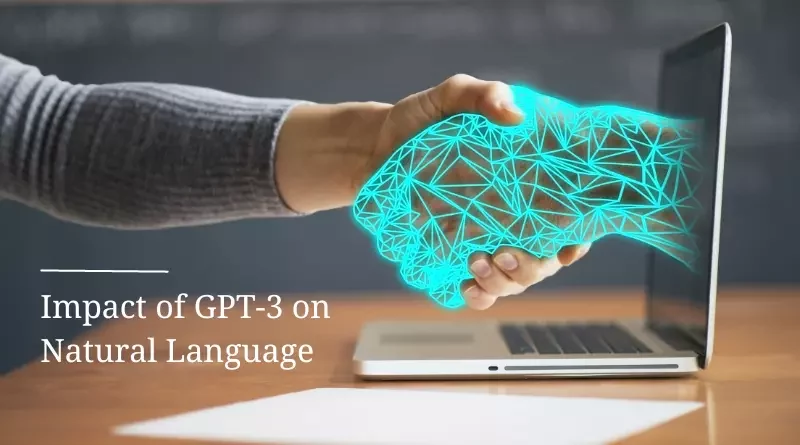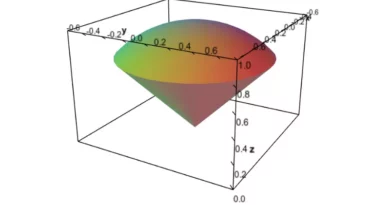The Impact of GPT-3 on Natural Language Processing
GPT-3, developed by OpenAI, is the latest and largest language model in the GPT (Generative Pre-trained Transformer) series. With its powerful language generation capabilities, GPT-3 has made a significant impact on the field of natural language processing (NLP).
GPT-3 is capable of generating human-like text for various tasks such as text completion, summarization, question answering, and more. Its advanced language generation abilities have drawn attention from both academia and industry, leading to new and exciting possibilities in NLP.
As the most prominent language model to date, GPT-3 has set a new benchmark for AI language generation. Its impact on NLP is undeniable, and it has the potential to revolutionize the way we interact with machines and interact with language in general.
Advancements in NLP with GPT-3
GPT-3 has brought about several advancements in the field of NLP. The model’s large size and impressive language generation capabilities have enabled it to tackle a broader range of NLP tasks with high accuracy and effectiveness.
For example, GPT-3 can generate coherent text for tasks such as summarization and translation. It can also answer questions and complete text passages with impressive accuracy. This has opened up new possibilities for NLP applications in areas such as chatbots, content creation, and data analysis.
Another key advancement is the reduced need for task-specific NLP models. With GPT-3, developers can now train models for a wider range of NLP tasks with minimal data, as it has been trained on a vast amount of diverse data. This has greatly reduced the time and resources needed to develop NLP models and has made NLP more accessible to a wider range of users.
Applications of GPT-3 in NLP
GPT-3 has a wide range of applications in NLP due to its impressive language generation capabilities. Some of the most exciting applications include:
• Chatbots: GPT-3 can be used to develop advanced chatbots that can understand and generate human-like responses in natural language. This has the potential to greatly improve the user experience of chatbots in customer service, information retrieval, and other domains.
• Content Creation: GPT-3 can generate high-quality text for various tasks such as article writing, content summaries, and translations. This has the potential to reduce the time and resources required for content creation greatly and could have a significant impact on the media and content industries.
• Data Analysis: GPT-3 can be used to extract insights from large amounts of natural language data, such as customer feedback, social media posts, and more. This has the potential to greatly improve the efficiency and accuracy of data analysis tasks, leading to better decision-making in various domains.
These are just a few examples of the many exciting applications of GPT-3 in NLP. As the field continues to evolve, new and innovative uses for GPT-3 will likely be discovered and developed.
Limitations and Ethical Considerations of GPT-3
GPT-3, like all artificial intelligence (AI) systems, has several limitations and ethical considerations that are important to understand.
Limitations:
• Language understanding: While GPT-3 has been trained on a large corpus of text, it still needs to be improved in truly understanding the meaning and context of language. This can lead to inaccuracies or biases in its responses.
• Data limitations: The quality and quantity of the data used to train GPT-3 can also impact its performance and the biases it may exhibit.
• Lack of common sense: GPT-3 needs to have the common sense and context awareness that humans possess, which can lead to unexpected or nonsensical outputs.
Ethical considerations:
• Bias: As GPT-3 is trained on existing text data, it may reflect and perpetuate existing biases in society. This can have harmful consequences, such as perpetuating stereotypes or amplifying misinformation.
• Privacy: The use of GPT-3 raises concerns about privacy, as it may process and store large amounts of personal information.
• Responsibility: As GPT-3 can generate human-like responses, it raises questions about who is responsible for its outputs and the potential harm they may cause.
It’s important to continue to evaluate and address these limitations critically, and ethical considerations as AI technologies like GPT-3 are developed and used more widely.
Future of GPT-3 and NLP
The future of GPT-3 and NLP (Natural Language Processing) is promising and holds great potential for advancements in a variety of fields.
Some potential applications of GPT-3 and NLP include:
• Chatbots and virtual assistants: GPT-3 can be used to create more sophisticated chatbots and virtual assistants that can understand and respond to complex human requests.
• Content generation: GPT-3 can generate high-quality written content, such as articles, summaries, and even code.
• Language translation: GPT-3’s ability to understand and generate multiple languages can lead to improved language translation systems.
• Question answering: GPT-3’s language understanding capabilities can be used to answer questions with high accuracy, potentially making it useful in fields like customer service, education, and more.
It’s likely that GPT-3 and NLP will continue to evolve and improve, leading to new and exciting applications in the future. However, it’s also important to consider the limitations and ethical considerations of these technologies and ensure they are developed and used responsibly.
Error in Body Stream
An error in body stream occurs when the data being transmitted between two systems does not match the expected format. This can be due to various reasons such as incorrect encoding, network issues, or corrupted data. An error in body stream can result in several problems, such as an inability to process or store data correctly, which can lead to incorrect results or lost data. To prevent error in body stream, it is important to properly encode and transmit data, and to validate the data upon receipt to ensure that it matches the expected format. Regular monitoring and testing of systems can also help identify and prevent errors in body stream.
Conclusion
In conclusion, GPT-3 is a cutting-edge AI language model that holds a lot of potential for a wide range of applications, including chatbots, content generation, language translation, and question-answering. However, it’s important to be mindful of the limitations and ethical considerations of this technology, such as biases, privacy concerns, and responsibility for its outputs.
The future of GPT-3 and NLP looks promising, but it’s up to us to ensure that these technologies are developed and used in a responsible and ethical manner. By staying informed and critically evaluating the potential impacts and uses of AI, we can ensure that GPT-3 and other AI technologies are leveraged for the betterment of society.
FAQs
What is GPT-3?
GPT-3 stands for Generative Pretrained Transformer 3, which is an advanced AI language model developed by OpenAI. It is capable of generating human-like responses in natural language and has a wide range of potential applications.
What are some of the limitations of GPT-3?
GPT-3 has several limitations, including limitations in language understanding, potential biases due to the quality and quantity of data used for training, and a lack of common sense.
What are some of the ethical considerations associated with GPT-3?
Some ethical considerations associated with GPT-3 include privacy concerns, the perpetuation of biases, and responsibility for its outputs.
What is the future of GPT-3 and NLP?
The future of GPT-3 and NLP (Natural Language Processing) holds great promise for advancements in various fields, including chatbots, content generation, language translation, and question-answering.
What is the conclusion of the article?
The conclusion of the article is that while GPT-3 is a powerful AI language model with a lot of potentials, it’s important to be aware of its limitations and ethical considerations and to ensure that it is developed and used responsibly. The future of GPT-3 and NLP is promising, but it’s up to us to ensure that these technologies are leveraged for the betterment of society.



